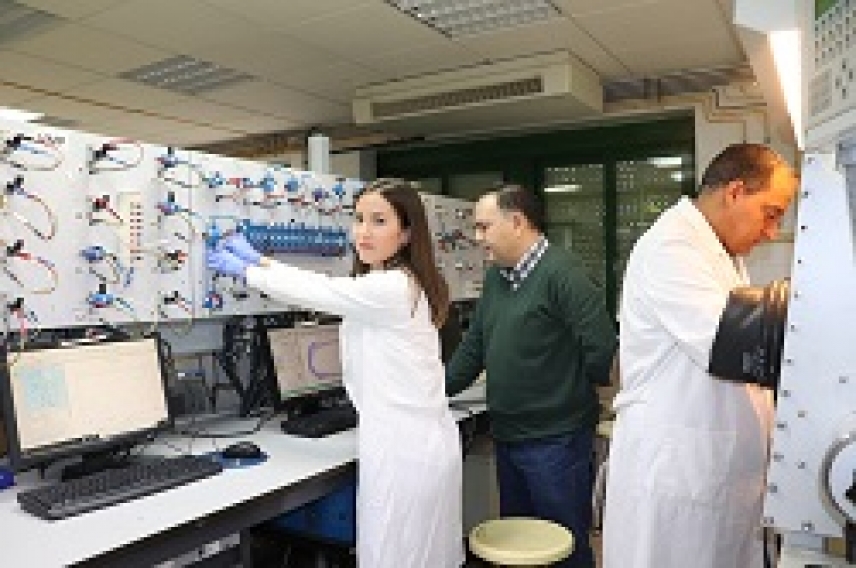
Despite all the negative points, lithium batteries have been commercially successful since the 1990’s. So, many research teams around the world have spent years carrying out advanced studies in order to develop batteries using components other than lithium, such as sodium, magnesium, calcium and aluminum, which could lead to what is known as post-lithium batteries. In this sense, research focused on sodium has advanced the furthest, followed by magnesium in terms of the number of studies carried out. But the development of post-lithium batteries is turning out to be tremendously challenging, especially developing those based on multivalent ions. In addition to these practical issues, the chemical reaction mechanisms that occur in post-lithium battery prototypes are much more complex and difficult to analyze compared to those of lithium batteries.
A University of Cordoba research team undertook the challenge of exploring calcium rechargeable batteries years ago, in a project led by Professors Ricardo Alcántara y Pedro Lavela. Calcium resources are in much greater supply than lithium resources, and could make batteries safer and as well as increase their performance. This team studied the calcium intercalation in molybdenum oxide and published their theoretical and experimental results in Chemistry of Materials. This project, whose first author is UCO researcher Marta Cabello, has allowed them to progress mainly in understanding reactions between battery components, when the anodes are calcium and the cathodes are molybdenum oxide and they exchange ions and electrons to generate electric energy.
Cabello explains that “we have taken a big step forward in demonstrating that calcium could work in a rechargeable battery, but charging it has to be made more efficient.” In this sense, in order for calcium batteries to be more effective and therefore be marketed, further research is needed to improve the electrolytic dissolution make-up. This means testing different salt and solvent compositions to find the optimal proportion, with the aim of enabling the calcium to intercalate better and more reversibly than molybdenum oxide and that Ca metal can be compatible with the electrolytic dissolution.
This research that awaits the UCO FQM288 team consists of looking for the best chemical compound and can be done experimentally in the laboratory and/or by means of theoretical computational calculations, such as those being performed by Professor Carlos Pérez.
Cabello, M; Nacimiento, F; Alcantara, R; Lavela, P; Perez-Vicente, C; Tirado, JL. Applicability of Molybdite as an Electrode Material in Calcium Batteries: A Structural Study of Layer-type CaxMoO3. CHEMISTRY OF MATERIALS. 2018-08-28, DOI: 10.1021/acs.chemmater.8b01116


